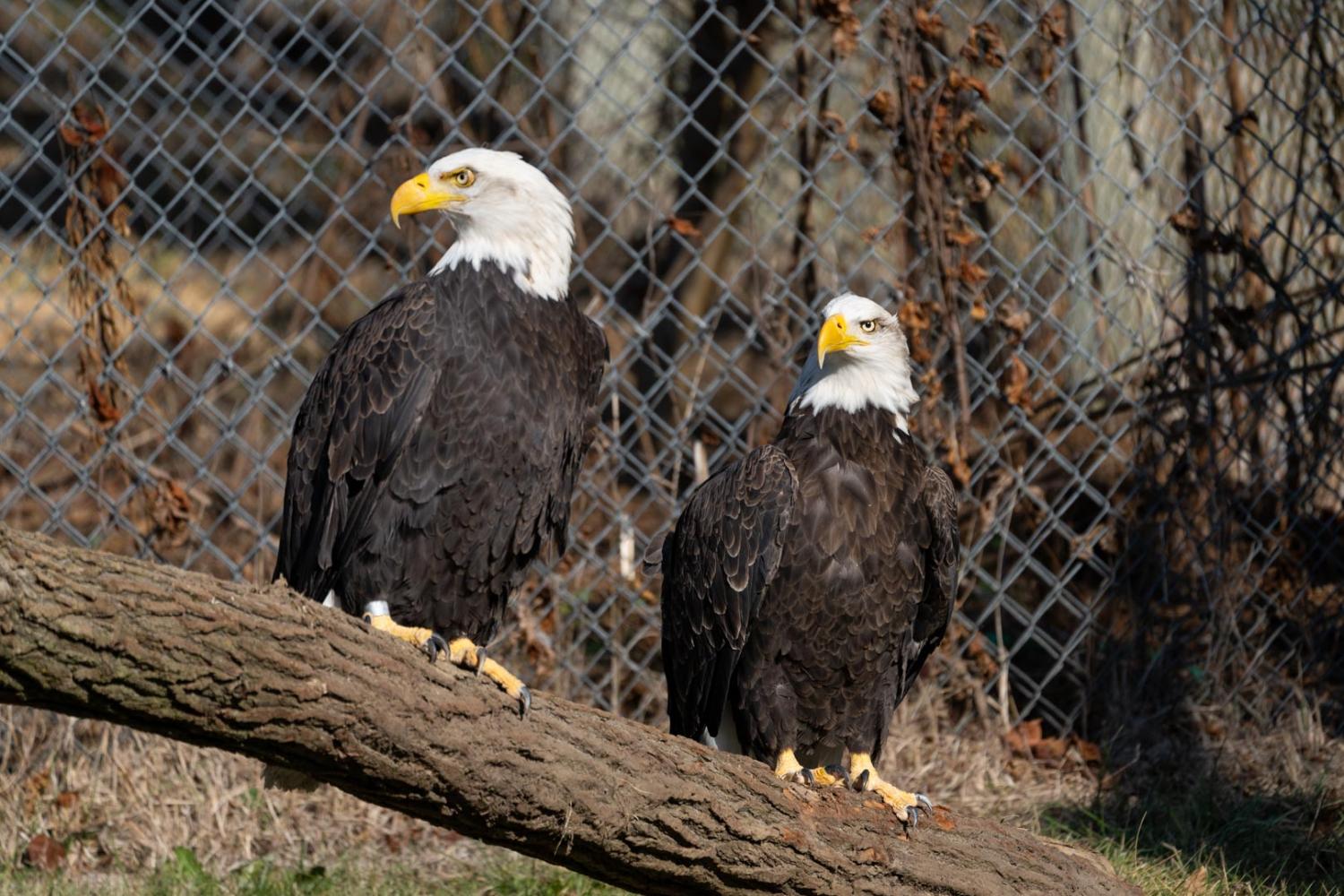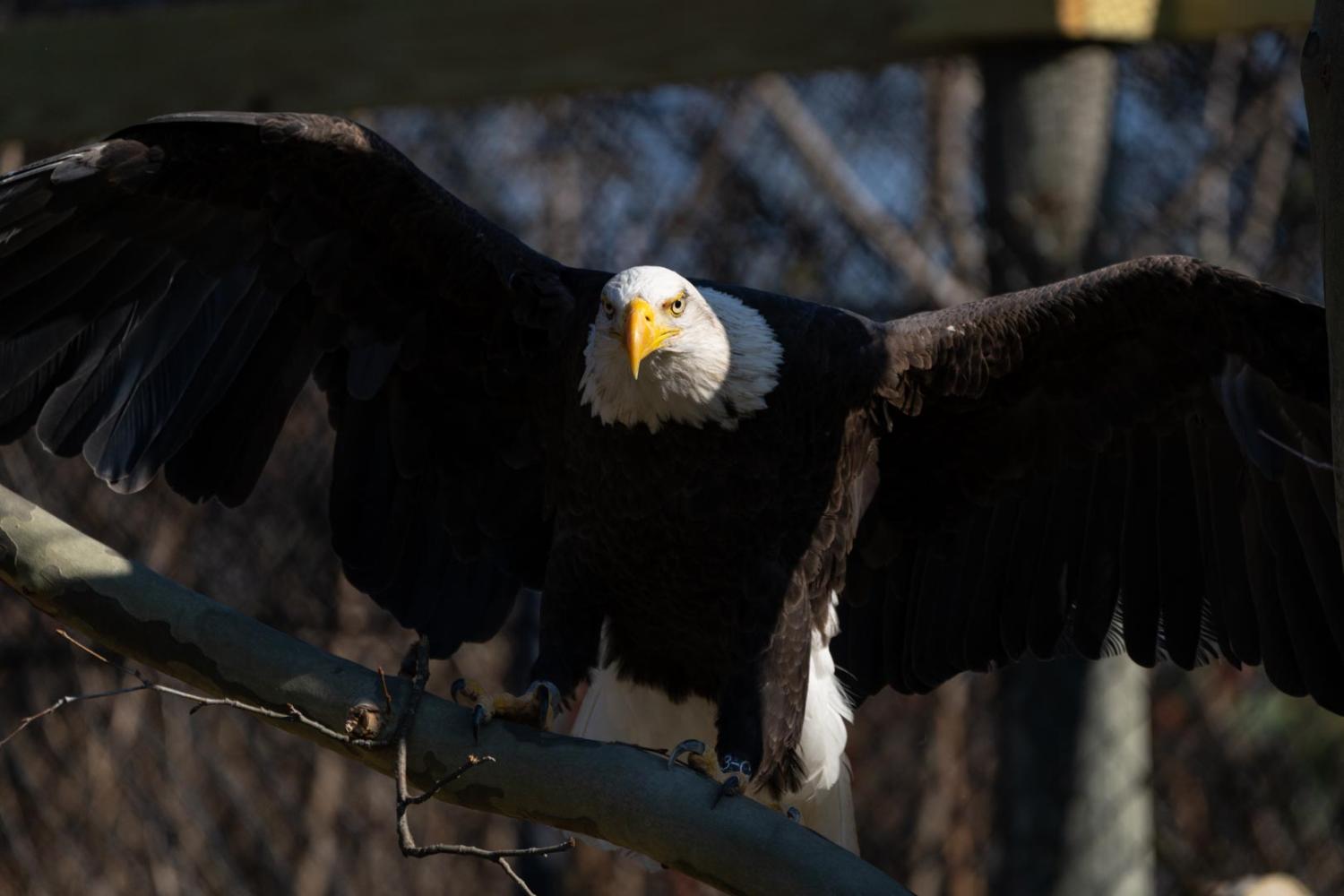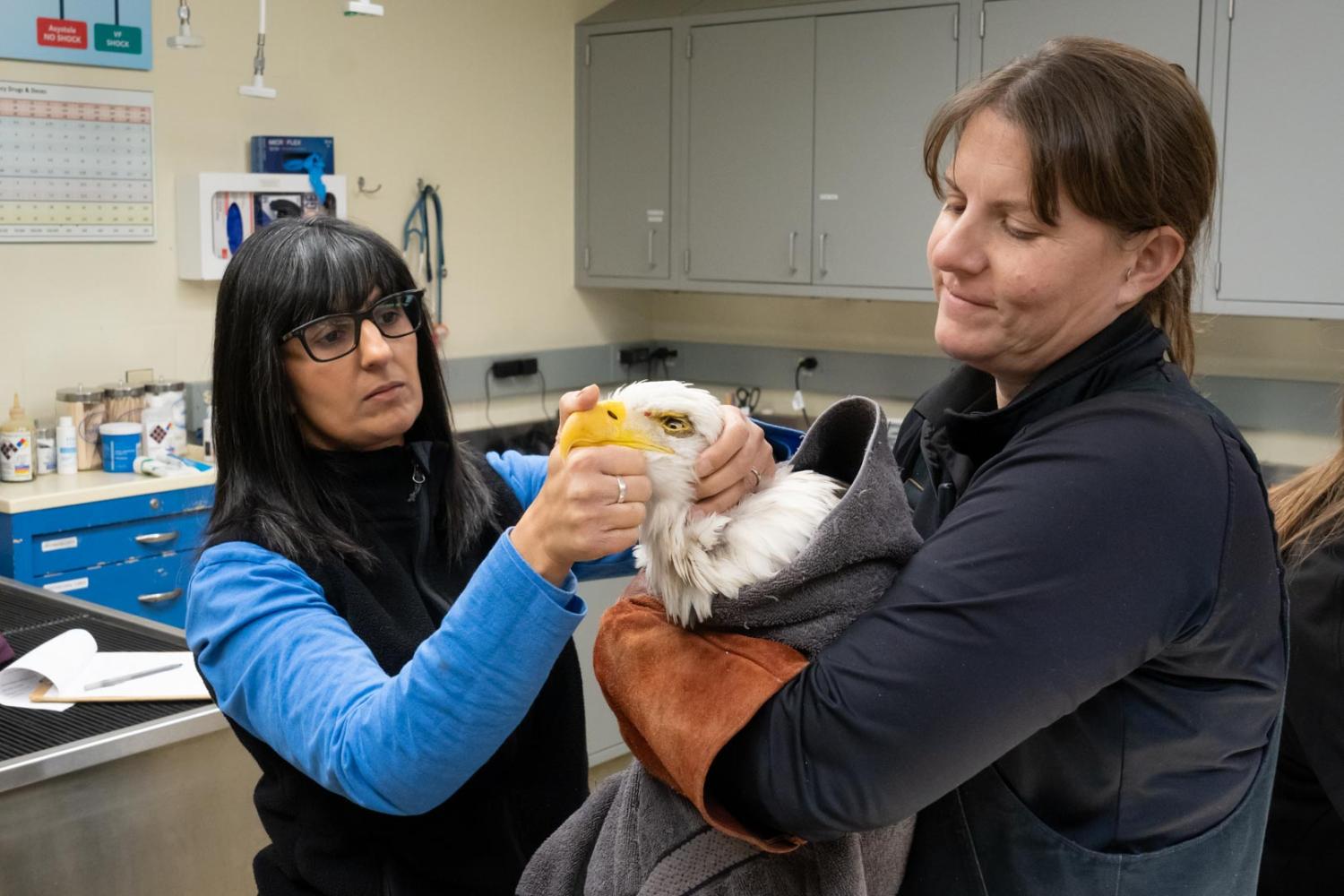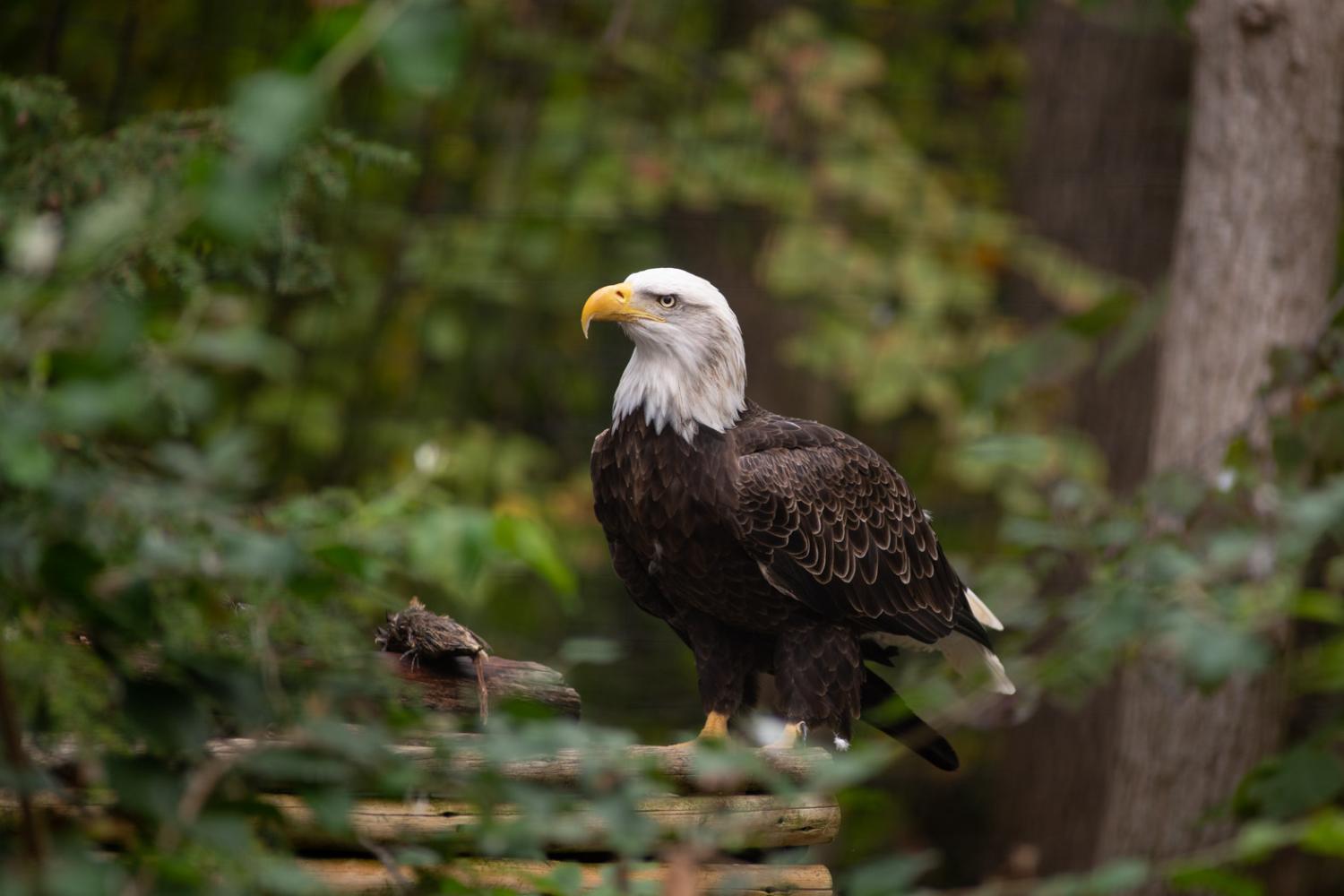In the world of wildlife conservation, every detail counts, even down to the well-being of individual animals under human care. At the Columbus Zoo, the recent well checks performed on our resident bald eagles shed light on the meticulous efforts undertaken to ensure the health and vitality of these majestic birds. Let’s delve into the reasons behind the checks, the dedicated team involved, and the valuable insights gained from the examinations.
A Dynamic History of Bald Eagle Care and Conservation at the Columbus Zoo

Bald eagles were bred and reproduced offspring at the Columbus Zoo between 1979 and 2005. During this time, 27 eaglets hatched, 21 of them survived, and 20 were released into the wild. Eagles George and Georgina produced 5 surviving offspring. After Georgina passed away, George paired with eagle Barbara, and they produced 16 more surviving eaglets.
Two methods of reintroduction to native ranges are generally used.
- Fostering is when captive hatched eaglets are transferred into wild nests and raised by the wild pair.
- Hacking is a procedure where eaglets are placed on a man-made tower located in a remote area. These towers are designed to allow eaglets to be fed without seeing humans. At fledgling age, the door to the tower is opened and the eagles can start to fly on their own. They may still use the tower as a home until they feel comfortable in their natural environment. Food items are placed on the tower until the eagles are no longer using it.
Of the 21 surviving eaglets, the first went to another accredited zoo, three were fostered in wild nests, and seventeen were placed in hacking towers. The Columbus Zoo combined efforts with the American Eagle Foundation by taking the eaglets to their facility in Tennessee where towers are utilized. Many of our staff, including Jack Hanna, were invited to observe the release process from their hacking tower!
Meet the Zoo’s Current Eagles

All born in the wild and rescued in Ohio and Michigan, bald eagles Zuni, Sioux, and Cheyenne are the resident bald eagles at the Columbus Zoo. They are in good health, a testament to the quality care provided by the dedicated staff. The eagles are fed a diet of trout, quail, and rats, ensuring they receive the nutrition required for their wellbeing.
- Cheyenne hails from Michigan, and weighs a little under ten pounds.
- Sioux was rescued in Ohio. She weighs slightly under nine pounds.
- Zuni was rescued by the Ohio Wildlife Center in 2012 and began her residency at the Columbus Zoo in 2013. She also weighs slightly under nine pounds.
All three eagles are non-release candidates due to injuries sustained in their native range. Sioux came to the Zoo with an eye injury, while Zuni and Cheyenne both arrived with wing injuries, making it unlikely that they could successfully hunt or protect themselves.
Purpose of the Well Check

Well checks are an integral part of the preventive medicine program at the Columbus Zoo and Aquarium.
The eagles' exams coincided with their transfer to a different habitat while renovations take place in the Zoo’s historic North America region. This strategic timing allowed for comprehensive health assessments to be performed, and any concerns to be identified in lab work, physical exams, or radiographs, allowing adjustments to be made in their management or medical care, ensuring the well-being of the eagles.
- Team Composition: Animal Health staff collaborated with Animal Care experts possessing bald eagle handling expertise. This collaboration ensured the safety of both the eagles and humans during the examinations.
- Efficiency Leads to Less Stress: To conduct safe and thorough examinations, the eagles were anaesthetized. This allowed the team to conduct physical exams, weight checks, blood collection, and radiographs, all while minimizing handling time and stress on the birds.
- A Calm Environment: Hoods are worn by the eagles to reduce stimulation, creating a less stressful environment during examinations (And, of course, making them look like avian superheroes).
- Overall, all three eagles appeared to be in good health, and exams allowed us to get updated baseline data for each bird.

Bald Eagle Conservation Progress
Well-checks like these at the Columbus Zoo and Aquarium offer a glimpse into the meticulous care and commitment to conservation for resident bald eagles. Through these efforts, the Zoo not only ensures the health and well-being of individual eagles but also contributes to the broader conservation narrative of this iconic species.
- Recovery Success: The bald eagle population in the United States has made a remarkable recovery. Once endangered due to habitat destruction and pesticide use, conservation efforts have led to a significant rebound in their numbers.
- Habitat Conservation: Bald eagles rely on diverse habitats, including large bodies of open water for hunting and tall trees for nesting. Conservation initiatives often focus on preserving and restoring these habitats to ensure the continued success of the species.
- Legal Protection: Bald eagles are protected under the Bald and Golden Eagle Protection Act and the Migratory Bird Treaty Act. These legal safeguards play a crucial role in preventing illegal hunting, disturbance, and trade of bald eagles, contributing to their sustained conservation.
“Bald eagle conservation stands as a testament to the power of collective efforts, showcasing what can be achieved when concerned members of the public and dedicated wildlife biologists unite to protect a national symbol,” said Nikki Smith, Curator of the Columbus Zoo’s North America Trek region. “By actively participating in habitat preservation, advocating for sustainable practices, and supporting conservation initiatives, individuals have demonstrated the impact of collaborative action in safeguarding iconic species like the bald eagle for future generations. This success story serves as an inspiring example of the positive outcomes achievable through shared commitment to environmental stewardship.”
How You Can Help Bald Eagles

While the bald eagles at the Columbus Zoo and Aquarium live behind the scenes during their habitat renovation, there are still ways you can support them!
- Learn about the redevelopment of the Columbus Zoo's historic North America region. Look for signs throughout the region, chat with a docent during your next visit, and continue to visit the website for updates!
- Donate to the Zoo Fund. Your contributions go direct to projects like the redevelopment of the bald eagle habitat.
- Looking for a night out with a cause? Mark your calendars for Zoofari, Central Ohio's ultimate fundraising event! Funds raised will go towards the redevelopment of the Zoo's North America region, including the bald eagle habitat!









